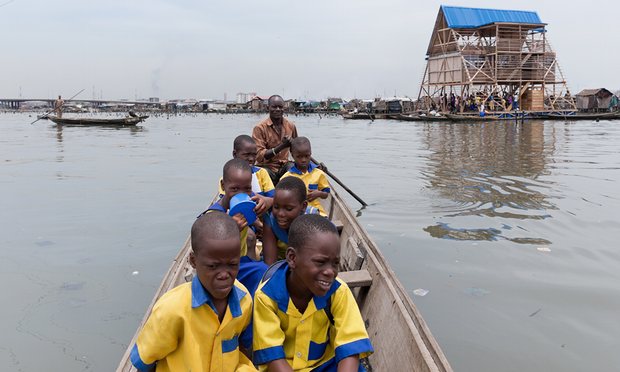City: Mexico City | Tool: Green Infrastructure Network
The transportation and mobility components of Mexico City’s Plan Verde (Green Plan) agenda, designed to lead the city towards a state of EcoMobility, was launched in 2007. The plan is based on a multi-component strategy to reduce traffic congestion and reduce greenhouse gases (GHG) emissions. The strategy has resulted in a set of programs to improve and expand public transportation systems, as well as offer more cycling and walking options. The Green Plan emphasizes local action, in particular, through initiatives such as the Hoy No Circula (Day Without Car) and Muevete en Bici (Move on Bikes) programs, Eco Bikes, Metrobus, and the expansion of the Metro system.
City name: Historic water community of Makoko, located on the lagoon heart of Nigeria’s largest city, Lagos.


Strategy name: Floating Technology
Problematic: Have little or no permanent infrastructure, thanks to unpredictable water levels that cause regular flooding.
Strategy description: Kunlé Adeyemi and NLÉ with the aid of various NGOs, including the UN, and local people, has designed and built, using local materials and labour, a floating school in the watery heart of Makoko. With the concept of there’s an “anything that floats” mentality when it comes to building materials, so Kunlé decided to buoy the school on floating barrels and locally sourced timber. Unskilled local workers were hired to build the structure, with the idea that they could then go out and build their own homes with the techniques learned while erecting the school. Everyone in the community understands its value, not least because all of the materials used are ones they live with each day. Inexpensive and elementary to assemble, the main aim of the school was to generate a new, sustainable and ecological building system for the teeming population of Africa’s coastal regions. The floating structure adapts to the tidal changes and varying water levels of the lagoon, making it invulnerable to flooding and storm surges.

Your own critical reflection: As a pilot project, it has taken an innovative approach to address the community’s social and physical needs in view of the impact of climate change and a rapidly urbanizing African context. This ain’t only solving problems but also throws immense light to all those other towns and regions in the world that are left shattered due to natural calamities and how they could be fixed by implementing simple solutions.
1. Find a similar initiative in other cities. Name the city and strategy. Discuss briefly the current problematic. Describe the main components of the chosen strategy and present your own critical reflection.
2. Glue a representative picture or draw a situation that depicts the intentions and strategies of your chosen development plan.
